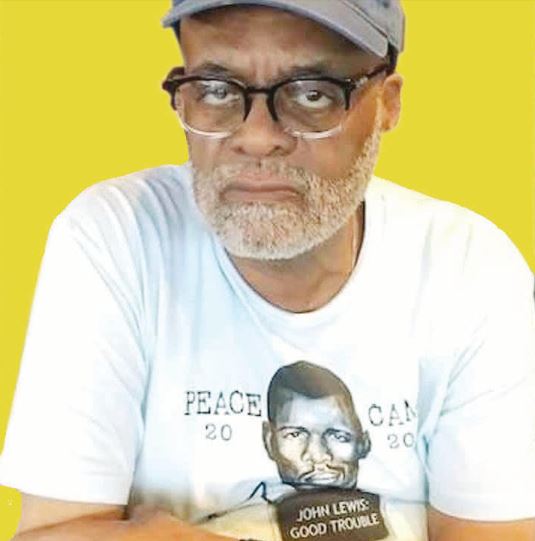By Ralph E. Moore Jr.
The legal settlement over the unauthorized, unjustified harvesting and distribution of Henrietta Lacks’ unique cancerous DNA cells began in Baltimore.
You may have heard that a 31-year-old wife and mother of five entered a racially segregated hospital ward at Johns Hopkins Hospital in East Baltimore in 1951. And, while being treated for cancer of the uterus, Dr. George Gey, head of tissue cell research for Hopkins, removed her cells. What he found changed the course of history. Gey discovered that, while most human cells died when removed from the body, the cells he took from Lack’s body not only survived— they multiplied, making them continuously available for future research.
Gey sent Lacks’ cells to other researchers who eventually started selling them. And the rest is medical history—a science miracle– and perhaps, the largest theft known to humanity.
Lacks died on October 4, 1951, but researchers would go on to profit from her cells for decades to come. From polio to COVID-19, 70 years of research has given hope and healing to millions over the years.
Billions upon billions of dollars have been paid, kept and spent because Lacks’ cells survived and kept reproducing outside of her mortal body. Such cell survival and reproduction (occurring every two to three days) had never ever happened before. Lacks nor her family were ever informed that cells had been taken from her uterus, her family found out decades later, almost by accident.
Since the Lacks’ story began in Baltimore, it is highly appropriate that our city honor one whose quiet miracle did so much for so many. Isn’t it proper that financial justice for Lacks’ descendants follow the attention and financial gain of the authors, doctors and researchers who have stood in the spotlight for so long?
Across the country, but especially in Baltimore, outrage has been expressed regarding the fact that up until July 31, the Lacks family had not received much recognition nor compensation for the use of their foremother’s harvested cells, sold and used all over the world for decades. In recent years, there has been a concerted effort to give Lacks and her descendants what is due.
In 2017, an exhibit called “The HeLa Project” was installed at the Reginald Lewis Museum of Maryland African American History and in Baltimore. It is a multimedia exhibition that includes a portrait of Lacks and a poem dedicated to her.
Last November, Johns Hopkins University and Johns Hopkins Medicine presented plans for their East Baltimore campus to construct a building named after Henrietta Lacks. The plans were brought before the Urban Design and Architecture Advisory Panel of the Baltimore City Planning Department.
The building will be 34,000 square feet and next to Deering Hall, which contains The Berman Institute of Bioethics. It is being built at the corner of Rutland and Ashland Avenues in the Eager Park community of the center city in East Baltimore. The Henrietta Lacks Building will contain classroom space for ethical research and teaching by The Institute and the Hopkins School of Medicine. Space will be available for use by the community. The research building was designed by Vines Architecture, an African-American company, and is expected to be completed in 2025, according to the firm’s website. The project will have more spending with local minority owned and women owned businesses than previously achieved by Hopkins: 30 percent targeted to minorities and women businesses and 20 percent to local business enterprises, all to honor Henrietta Lacks.
Finally, there are two symposiums to honor Lacks that are conducted by Johns Hopkins and hosted by The Johns Hopkins Institute for Clinical and Translational Research (ICTR). The ICTR has been working with the Lacks family since 2010 to plan the symposium each year. One symposium brings in world renown scholars to discuss ethics in medical research; approximately 1,000 persons attend the talk and discussion. The second forum is the Henrietta Lacks High School Symposium, which brings youth together from Baltimore City to Johns Hopkins to spend a day learning about bioethics and bioethical research.
The Henrietta Lacks East Baltimore Health Sciences Scholarship is awarded to a student within the Baltimore City Public School System, and there is a $15,000 Henrietta Lacks Award given each year to a local community group that works to promote community health, awareness and progress. The award was created by the JHU Urban Health Institute (on which, full disclosure, I served as a founding member). The award is presented each year during the Hopkins ICTR symposium previously discussed in this column.
Suffice to say, several things are being done in Baltimore to honor Henrietta Lacks. The citizens of Charm City here rejoice no less than the actual family members of Lacks, who reached a settlement in their suit against Thermo Fisher Scientific, a biotech research organization whose business dealings and profits for years contained sales of Henrietta Lacks’ HeLa cells.
The family, represented by renowned civil rights attorney Ben Crump, and Thermo Fisher agreed in the settlement not to disclose its terms. But the public can only imagine that when justice finally came, it arrived with overstuffed money bags to put on the table.
I think it’s safe to say that the Lacks family will be fine for generations to come, all thanks to Henrietta and her immortal cells.
The post Baltimore celebrates Henrietta Lacks as the moral arc of the universe bends her way appeared first on AFRO American Newspapers .










